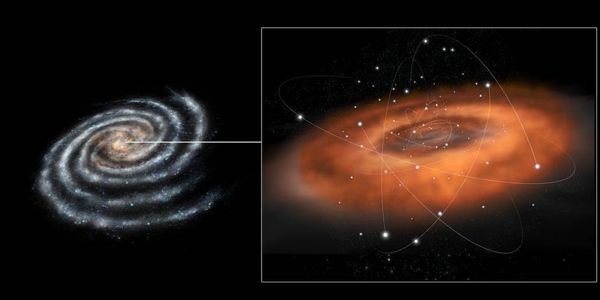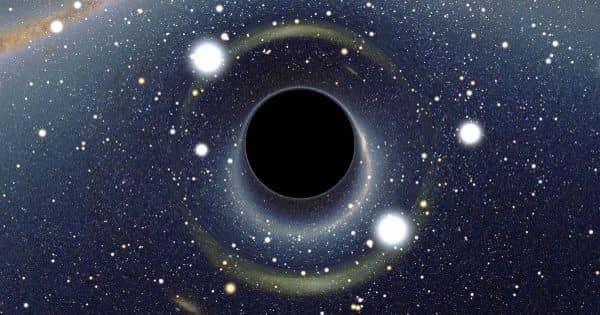Most galaxies contain black holes that are so massive — up to several billion times the mass of our sun — that they have earned the moniker “supermassive.” Compare this to a typical stellar-mass black hole, which is only 10 to 100 times the mass of our sun. Understanding the origin and evolution of galaxies will be aided by understanding these supermassive black holes. One unanswered question is whether or not they can form binaries.
Juan A. Fernández-Ontiveros of the Istituto Nazionale di Astrofisica (INAF) in Rome and Teo Muoz-Darias of the Instituto de Astrofisica de Canarias (IAC) in Canarias have published an article in which they describe the various states of activity of a large sample of supermassive black holes in galaxies’ centers.
They classified them based on the behavior of their closest “relatives,” stellar mass black holes in X-ray binaries. The article was recently published in Monthly Notices of the Royal Astronomical Society (MNRAS).
Dynamical studies, which measure the gravitational influence of the central object on neighboring stars and gas in binary systems and galaxies’ nuclei, provide the ultimate observational evidence that a celestial body is a black hole. However, there are several distinct signatures of black hole-powered activity that are commonly used as proxies for black hole existence.
Researchers describe the different states of activity of a large sample of supermassive black holes in the centres of galaxies.
Black holes range in mass from a few times the mass of the sun to objects with thousands of millions of solar masses. Understanding their activity cycles from a global perspective has been the subject of decades of research. Those of stellar mass are found in binary systems with a companion star from which they suck out the gas required to sustain their activity, whereas those of supermassive mass are found in the centers of the vast majority of galaxies and feed on the gas, dust, and stars that fall into the gravitational well of the galactic nucleus.
Stellar mass black holes evolve at a breakneck pace. Their activity cycles typically last a few months or years, during which they transition through various states, or phases. These are distinguished by changes in the properties of their accretion discs (where hot gas accumulates before falling into the black hole), winds, and material jets. The accretion disc dominates the first state, while the jet dominates the second. The ‘soft’ state is indicated by the thermal emission of the disc’s plasma, whereas the ‘hard’ state is observed when the disc cools and the emission at radio wavelengths becomes very intense.

Because they are much more massive, supermassive black holes evolve at a much slower rate than their stellar mass counterparts. To demonstrate the presence of states and transitory phenomena in these would require millions of years of observation because the changes during human life would be too small to measure. Furthermore, galaxies’ nuclei are densely populated with stars, and the absorption of light by hydrogen and dust masks and hides the radiation from the accretion disc around the central black hole.
Because they are much more massive, supermassive black holes evolve at a much slower rate than their stellar mass counterparts. To demonstrate the presence of states and transitory phenomena in these would require millions of years of observation because the changes during a human life would be too small to measure. Furthermore, galaxies’ nuclei are densely populated with stars, and the absorption of light by hydrogen and dust masks and hides the radiation from the accretion disc around the central black hole.
“The study demonstrates the presence of accretion states in supermassive black holes, with properties very similar to those we know from stellar-mass black holes, where systems in the ‘soft’ state have a bright disc and those in the ‘hard’ state have intense radio emission while the disc is very weak,” Juan A. Fernández-Ontiveros, an INAF researcher who was trained at the IAC, explains.
“This work opens a new window into understanding the behavior of material (gas) when it falls into black holes with a wide range of masses, and it contributes to a more precise understanding of the activity cycles of the supermassive black holes that are at the centers of most galaxies,” says Teo Muoz-Darias, an IAC researcher.
















